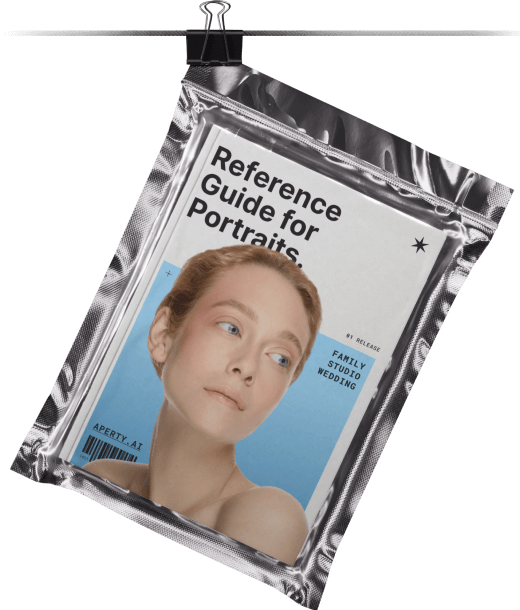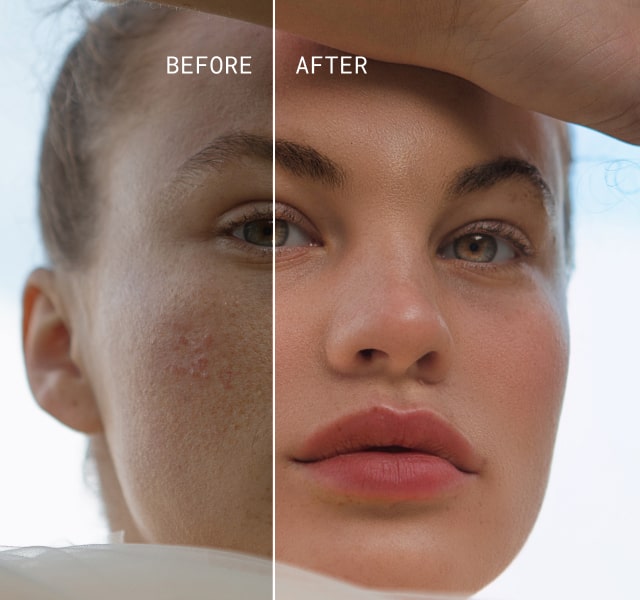Creative Portrait Photography: Fresh Ideas For Your Shots
November 05, 2024

Finding your unique style is one of the most challenging aspects of any art form, and yet it’s essential. A distinct style not only makes your work recognisable but also helps it stand out in a crowded field. When your style becomes identifiable, it can attract clients and brands who seek out your specific look as it’s something they can’t get elsewhere.
A personal style can emerge through various elements, such as composition techniques, theme selection, and how you present your subject matter. In this article, we’ll focus on how portrait editing can play a key role in shaping your signature style. Although our primary focus will be on portrait photography, many of the tips and techniques we cover can apply across other genres of photography.
We’ll guide you through experimenting with different styles and what to watch for as you develop your unique editing approach. So, let’s explore the art of creative photo retouching and discover interesting portrait editing tips and tricks that make your work stand out from the rest.
Developing a Unique Editing Style
 Creating a unique editing style involves more than just experimenting with software—it’s a process of learning, inspiration, and refinement. Arming yourself with knowledge will make the journey smoother and more effective.
Creating a unique editing style involves more than just experimenting with software—it’s a process of learning, inspiration, and refinement. Arming yourself with knowledge will make the journey smoother and more effective.
Tip 1: Learn Different Techniques
Start by researching various editing techniques and learning how other photographers approach their process. Analyse the styles you admire and understand what makes their edits distinctive. By studying their workflows, you’ll develop a sense of what to look for in your own images and begin identifying the elements that resonate with you.
Some advanced editing methods may feel challenging at first, but mastering them will not only improve your technical skills but also expand your creative options. Over time, you'll develop a toolkit of techniques to help shape your own unique style.
Tip 2: Find Inspiration
Inspiration doesn’t have to come solely from other photographers. Explore films, TV shows, paintings, and illustrations; anything that aligns with the mood or style you aim to create. Great filmmakers and artists often have a consistent visual style that relies heavily on lighting, colour, and composition to convey mood.
Create mood boards with collected references, whether they’re stills from movies, magazine spreads, or artworks that inspire you. Pin these up on your wall or keep them digitally accessible. Study them closely and write down the elements that stand out to you most. Use these notes to spark ideas for your own edits and shoots.
Tip 3: Trial and Error
The good news is that developing a style takes time, and that truly is a good thing as during that time you’ll gain valuable experience. As you experiment, you’ll refine your editing skills and begin to recognise what works best for your vision. Seek constructive feedback from peers and pay attention to how your work is received on social media. Honest feedback is essential to growth, and sharing your work, even when it’s not perfect, is a crucial step in the learning process.
Don’t hide your work until you feel it’s flawless. Each time you share your progress, you gather insights that bring you closer to your signature style. It’s all part of the journey, so embrace the ups and downs and use them to your advantage.
Developing a unique style requires patience, but it’s also important to enjoy the process. The skills and confidence you build along the way will ensure that when your style catches the attention of clients and brands, you’ll be fully prepared. Draw inspiration from the artists you admire, understand how they edit, and let that knowledge fuel your creativity.
Find out more: Editing Portrait Photos Like a Pro with Aperty: A Step-by-Step Guide
Now that we’ve covered the foundations, it’s time to explore some creative editing techniques to help you shape your own distinctive look.
Creative Editing Techniques to Explore
 There are various techniques you can use to develop your own signature look. Through experimentation and refinement, you’ll find an approach that resonates with you. Below are some key editing techniques to consider when building your unique style:
There are various techniques you can use to develop your own signature look. Through experimentation and refinement, you’ll find an approach that resonates with you. Below are some key editing techniques to consider when building your unique style:
1. Colour Grading
How you apply colour to your portraits can set the tone for your entire body of work. You might create a warm or cool colour grade that becomes a consistent feature across your portfolio, or experiment with more distinct styles like pastel tones or muted palettes.
Understanding colour theory is essential, it will help you convey emotions effectively and identify which colours complement or clash. Look for inspiration in photography, cinema, and art to guide your colour-grading choices and help create mood-driven images.
2. Retouching Techniques
Retouching is a cornerstone of portrait editing, but it can also be a creative tool. You might develop a subtle approach or lean into heavier retouching for a distinct, stylised effect. Techniques such as skin smoothing, blemish removal, and enhancing features such as brightening eyes or softening skin, can become part of your signature style.
Experiment with how you enhance facial features or apply texture to the skin. For instance, you might opt for a dreamy, soft look or emphasise sharpness and detail. Explore the work of other photographers and artists throughout history to find inspiration for your approach.
3. Dodge and Burn
Dodge (lightening) and burn (darkening) tools allow you to sculpt the light in your portraits, adding depth and dimension. This technique is often used to enhance facial features by deepening shadows and brightening highlights, intensifying the lighting used during the shoot.
You can also get creative by exaggerating contrasts to create drama or selectively adjusting areas to guide the viewer’s attention. Study how professional portrait photographers use dodge and burn, and experiment with this technique in your own work to build a distinctive look.
4. Adding Textures
Adding textures can give your portraits a unique character. Overlays like grain, light leaks, or patterns can introduce a creative flair to your images. The beauty of this technique is that the possibilities are endless, textures can come from anything, from fabrics to natural elements like flowers or leaves.
Try blending these textures into your portrait to create a layered, eye-catching image. Look for inspiration in cinema, photography, and fine art to see how textures are used effectively. Then, explore what resonates with your personal aesthetic and develop it into a consistent style.
5. Selective Colour Adjustment
Working with selective colour adjustment allows you to manipulate specific tones in your image. Unlike colour grading, which applies a global adjustment, selective colour lets you draw attention to certain areas by isolating or enhancing individual colours.
For example, you might desaturate the background to create a muted, neutral space while keeping your subject vivid and vibrant. Alternatively, you could highlight only one colour while balancing or softening the rest. As with colour grading, a solid understanding of colour theory will help you use this technique effectively.
When you begin editing, you’ll have a range of tools at your disposal. Remember that each of these tools can be used creatively to help you establish a unique style. Even simple techniques like retouching can be done in a way that reflects your personal vision, setting your work apart from others.
Draw inspiration from photographers, films, and art to discover what resonates with you, and embrace trial and error as part of the process. The more you experiment, the closer you’ll get to finding a style that feels authentically yours.
Consistency Across your Work
 Once you’ve found a look that resonates with you, the next step is to develop it as part of your signature style. The key to establishing a recognisable style lies in consistency, this is how your work becomes distinct and memorable.
Once you’ve found a look that resonates with you, the next step is to develop it as part of your signature style. The key to establishing a recognisable style lies in consistency, this is how your work becomes distinct and memorable.
Build a portfolio of strong images that reflect the same editing style. A cohesive portfolio creates a sense of harmony, offering a unified presentation instead of a collection of images with varying tones or themes. This consistency adds a professional polish that will impress clients and brands, boosting their confidence in investing in your services.
Your Fully Illustrated Portrait Guide —Free!
Enter your email below and get it instantly!
Check your email—the guide is all yours!
We hope you’ll love the portrait references and find them super useful. Get inspired, snap your shots, and let Aperty help you bring your vision to life. We’re so excited to see what you’ll create!

Consistency also makes your work more identifiable. As you continue to create images with the same stylistic approach, people will begin to associate those visual elements with your name. Over time, when others emulate your style, viewers will recognise your work as a source of inspiration.
To maintain consistency, consider creating presets that align with your style. Presets not only help you stay on track with your editing but also streamline your workflow, saving you time and helping you deliver projects faster to clients.
Ultimately, consistency is the cornerstone of developing a unique style. Once you’ve identified your aesthetic, ensure that your work is harmonious across your portfolio. This will not only help you stand out but also build trust with clients, solidifying your identity as a professional photographer.
Common Mistakes to Avoid
 While experimenting with different editing styles, it’s easy to make mistakes that can undermine your professionalism and knowledge of photography. Here are some common errors to watch out for when editing portrait photography:
While experimenting with different editing styles, it’s easy to make mistakes that can undermine your professionalism and knowledge of photography. Here are some common errors to watch out for when editing portrait photography:
Mistake #1: Over-Editing Your Portraits
It’s easy to get carried away with the endless tools available in editing software. However, the more effects you add, the less impactful your portrait can become. Remember the old adage: less is more. A distinctive style can emerge from minimal adjustments, which often looks far more professional. Feel free to experiment, but aim to use tools sparingly to maintain the focus and quality of your portraits.
Mistake #2: Inconsistency in Editing Style
As mentioned earlier, consistency is key to developing a recognisable style and building a cohesive portfolio. While experimenting with new styles is part of the creative process, it’s essential to separate these explorations from your main portfolio. Consider creating a separate side-project portfolio for these experiments to demonstrate your versatility without diluting your primary body of work.
Mistake #3: Neglecting Natural Skin Tones and Product Accuracy
One of the most common mistakes in portrait editing is failing to maintain natural skin tones, especially in heavily stylised edits. Unless you’re using colour gels or creative lighting techniques that intentionally alter colours, it's essential that the skin and any featured products remain accurate to real life. Use masks and selective adjustments to ensure skin tones and product colours stay realistic, preserving the integrity of the most important elements in your image.
The Bottom Line
 Creating a distinctive style is something all photographers should aspire to. It helps you stand out, develop a recognisable signature look, and inspire others. When photographers begin to look to your work and emulate your style, that’s when you know you’ve truly found your visual identity.
Creating a distinctive style is something all photographers should aspire to. It helps you stand out, develop a recognisable signature look, and inspire others. When photographers begin to look to your work and emulate your style, that’s when you know you’ve truly found your visual identity.
Draw inspiration from various sources and experiment with creative editing techniques to discover a style that resonates with your tastes. Once you’ve found it, build a cohesive portfolio showcasing your signature style and present it to potential clients and brands.
The most important thing to remember is consistency. Staying consistent with your chosen style will allow it to evolve naturally while ensuring that over time, people begin to recognise your work at a glance as uniquely yours.
